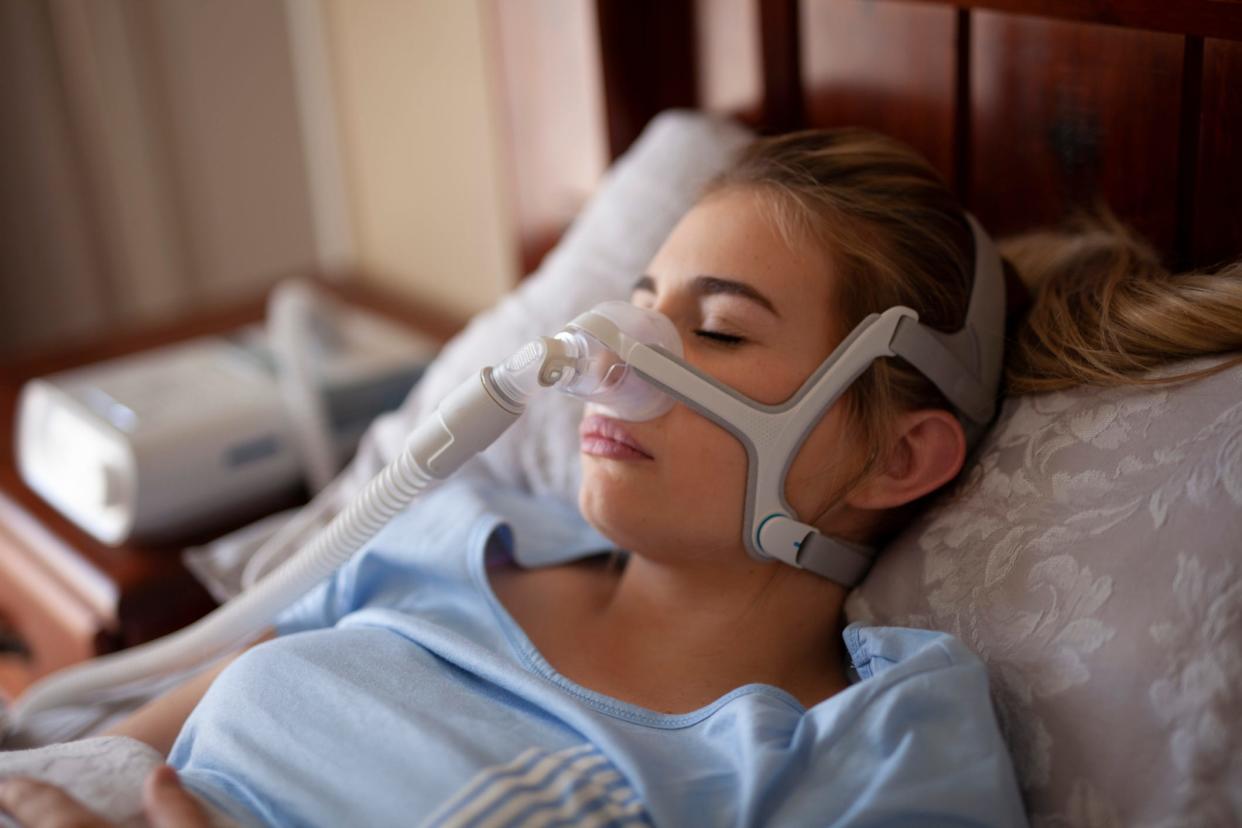Focus on Eyes: Did you know sleep apnea can affect your eyes? Well, it can

The White House recently announced President Joe Biden is diagnosed with sleep apnea and uses a CPAP, or continuous positive airway pressure machine, while sleeping.
Sleep apnea occurs in about one in four men and one in 10 women. Many of them are undiagnosed. In sleep apnea patients, the muscle in the airway relaxes excessively during sleep.
The negative pressure with breathing in causes the narrowing or obstruction of the airway and interrupts airflow up to a hundred times an hour.
The oxygen level in the blood intermittently drops to dangerous levels. Sleep apnea increases the risk of high blood pressure, heart attacks, irregular heart beat, stroke and dementia.
There are many long term side effects in the eye due to fluctuating blood oxygen levels associated with sleep apnea.
Dr. Ho's previous columns:
Protect the eyes: Your eyes need as much sun protection as your skin
Bet you didn't know this: The eyes can often show signs of a sexually transmitted disease
Seeing spots: If you notice a spot on your eye, see a doctor immediately
The blood vessels in the retina are severely affected by the low blood oxygen saturation at night. Sleep apnea patients with retinal diseases caused by diabetes or hypertension tend to have more advanced conditions and rapid progression when undiagnosed and untreated.
Patients with sleep apnea are also at a higher risk of retinal artery or retinal vein occlusion with damage to retinal function and vision.
Ischemic optic neuropathy is a painless visual loss from stroke to the optic nerve.
About 75 percent of these patients have sleep apnea in several large scale studies. Although the visual loss is irreversible, treatment for sleep apnea may prevent an attack on the other eye which occurs in about 15 percent.
Optic nerve swelling from increased pressure in the brain without known reasons typically occurs in young women. Some of them may suffer from sleep apnea.
The increased carbon dioxide levels from interrupted breathing may dilate the blood vessels and increase pressure in the brain, leading to optic nerve swelling.
Screening for sleep apnea helps to treat optic nerve sleep and save vision and lives.
Many sleep apnea patients have floppy eyelid syndrome. They have lax upper eyelids that are easily kept open from pillows or bedding during sleep.
They are chronically sleep deprived and are less awakened from eye irritation. The eyes are frequently burning and red. Topical lubrication and sleep apnea management are useful in the treatment of floppy eyelid syndrome.
The National Heart Lung and Blood Institute and the American Sleep Association have prepared an obstructive sleep apnea profile.
The risk factors include obesity, large neck size, enlarged tonsils in children, family history of sleep apnea, male, and increased age.
The signs and symptoms include loud snoring, gasping or choking while asleep, morning headaches, lack of energy, daytime somnolence, and memory or concentration problems.
Please discuss with your physicians if you have some of the risk factors or signs or symptoms. Sleep apnea is a very treatable condition and many of the ocular side effects are reversible.
Dr. Frederick Ho, the medical director of Atlantic Eye MD and Atlantic Surgery and Laser Center, is a board certified ophthalmologist. Atlantic Eye MD is located at 8040 N. Wickham Road in Melbourne. To make an appointment please call (321) 757-7272. To learn more visit AtlanticEyeMD.com.
This article originally appeared on Florida Today: Sleep apnea can cause problems for your eyes among other things

